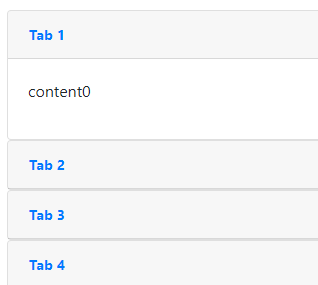HTML components
We have some built-in pandoc filters, togeter with some javascripts in the default template, which makes some complex HTML components available.
Table from file
Syntax:
```table
caption : An awesome table
file : ../tests/filetable.txt
header : true
width : 1
total_width: .8
align : default
rows : 10
cols : 0
csvargs :
dialect: unix
delimiter: "\t"
```

- You can have individual width for each column:
width: - .2 - .4 - .2 - As well as alignment:
align: - left - center - right - You can show part of the table with
rowsandcols.0means to show all the rows or columns. - See
csv.readerforcsvargsfromcsvmodule.
Tabs and collapses
Sometimes, when there are too many sections and you want to keep the title in the same screen, you probably need to use tabs or collapse. A simple example is as below:
# {{title}}
{% for i in range(3) %}
::: {.tab}
content{{i}}
:::
{% endfor %}
'''
Where there are no more than 3 ::: {.tab}, then they will be rendered as tabs (actually implemented by javascript):

Otherwise, it will be collapses:

To specify the names of the tabs or collapses, you need h3/h4/h5 in the div, depending on the up level of the headings. For example:
# {{title}}
{% for i in range(3) %}
::: {.tab}
## Section{{i}}
content{{i}}
:::
{% endfor %}
'''
Note
Headings in ::: {.tab} used as tab/collapse names will also be adjusted by envs.report.level
Hint
A set of tabs or collapses can be embedded in a tab or a collapse.
Hint
You can also force them into collapses when there are no more than 3 or force them into tabs otherwise. To force a set of ::: {.tab} into tabs, you need to add one more class to the DIV:
- For tabs:
::: {.tab .force-tab} - For collapses:
::: {.tab .force-collapse}
Modal
A modal is like a popup box inside the page. You can put anything in a modal.
Syntax:
# Title
Click [here](modal#detailinfo) for details.
::: {.modal id="detailinfo" title="Detailed information" closebtn="true" size="xlarge"}
Anything you want to put in the modal
You may also put tables, images, tabs and collpases in here
:::
The link to popup the modal has to be with URL like modal#<id>. closebtn is controlling whether to show a close button on the bottom of the modal. For modal size, see below:
| Size | Alias | Modal max-width |
|---|---|---|
| small | sm | 300px |
| default | - | 500px |
| large | lg | 800px |
| xlarge | xl | 1140px |
Citations
You can put citations like markdown link shortcuts:
A paper[1] mentioned, ...
[1]: The paper
You can have citations for each process, finally they will be re-ordered and merged if some processes share same references (you have to have extractly the same refereces for different processes, lik The paper here.
Warning
You have to use inline links [text](link) instead of [text][1] for real links.
Appendix
One report will only have one appendix, so the appendix content from all processes will be combined. To claim an appendix section in the template, you have to use level-2 heading:
## Appendix
### Section1
...
Warning
- Appendix should be claimed exactly using
## Appendix, which will NOT be adjusted byenvs.report.level. - Any headings claimed after it will not be adjusted by
envs.report.level, either. So it should be put at the end of the template